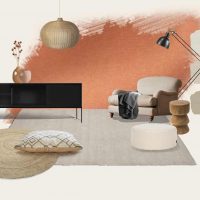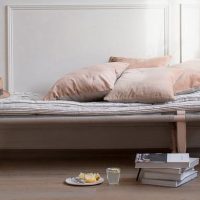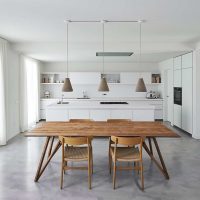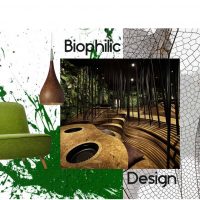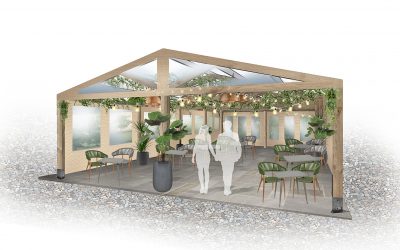Our Definitive Guide to Successful outdoor spaces for the hospitality Industry post-COVID 19 and beyond.
Table of Contents
Planning and Legal requirements for outdoor spaces.
Outdoor Structures for the hospitality industry.
Heating your outdoor space.
Outdoor furniture for the hospitality industry.
All you need to know about outdoor fabrics.
Lighting for outdoor areas.
How to plant an outdoor hospitality area.
The Wow Factor and how to achieve it in your outdoor space.
The hospitality sector is the one industry that relies heavily on human interaction and has therefore suffered a significantly negatively impacted during this pandemic. Consumers are wary, and governments have imposed strict lockdown rules resulting in significantly reduced or zero trading for much of the year. For many a rapid transformation was required in order to merely survive; take-out, delivery, ghost kitchens and expanding their outdoor offer were the more obvious options for many in order to satisfy the needs of an increasingly concerned yet social customer.
Another surprising outcome of the pandemic has been our increased appreciation of the great outdoors. A whopping 7.5 million people ‘enjoyed’ wild swimming in open water and outdoor pools last year, according to Sport England. For those of us that are of the less masochistic nature, outdoor dining we have realised provides some light relief from the realities of the ‘outside’ world!
So what makes the perfect outdoor dining experience? How can cafe’s bars and restaurants ensure that their investment will result in a return, not just for three or four sunny summer months, but all year round?
In this blog we focus on the key elements required to create a welcoming and relaxing outdoor environment worthy of competing with any interior setting – Planning and Legal, Structure, Heating, Furniture, Fabric, Lighting, Planting and the all so important ‘ Wow factor’.
The aim is to provide owners with the knowledge to balance expenditure on the structure and décor, with keeping customers warm and safe while simultaneously providing them with enough capacity to make operating worthwhile lasting long past the effects of the pandemic.
Planning and Legal requirements for outdoor spaces

Planning permission: In some areas planning permission will be needed to seat customers outside and this may depend on what works you need to carry out to make your outdoor seating area. It will also depend on your local council and it would therefore be prudent to discuss with your local authority whether planning permission will be needed.
Premises Licence.
Prior to engaging in any works to an outdoor space check the conditions in your premises licence for outdoor trading parameters.
Pavement Licence.
A pavement licence is a licence granted by the local authority, or deemed to have been granted, which allows the licence-holder to place removable furniture over certain highways adjacent to the premises in relation to which the application was made, for certain purposes. This is a streamlined process to allow businesses to secure these licences in time for the summer and, where they are deemed to have been granted, allow these licences to remain in place for a year but not beyond 30 September 2021. Where a pavement licence is granted, clear access routes on the highway will need to be maintained, taking into account the needs of all users, including disabled people
Fees.
The fee for a Pavement Licence varies between local authorities. The new process provides a cheaper, easier and quicker way for businesses to obtain a licence. The fee for applying for a licence under the new process, is capped at £100 and the consultation period is 5 working days (excluding public holidays) starting the day after the application is sent electronically to the authority
Outdoor Structures for the hospitality industry

Depending on your pub, restaurant or café setting you may need to provide an additional weatherproof structure or canopy in order to provide shade or protection from the elements. There is an ever-increasing range of options available from marquees, gazebos and igloo pods or garden pods, right through to more solid timber framed pergolas or pavilions.
While the current situation has created an obvious surge in popularity in outdoor dining and beer gardens it is unlikely to subside once the effects of the pandemic have diminished. It would therefore be prudent for a more long-term investment in any outdoor structures which can be used long past the effects of the pandemic.
The key to the success of any outdoor structure is flexibility and retaining control of its ‘internal’ ambience such as heat, light and shade. This should be achieved without causing disruption to customers or service just as one would in an indoor setting.
The following are a range of options available that will last long past the pandemic.
Pergolas, Gazebos & Pagodas.
There is much confusion between these three structures, in general, they are all open or semi-open in some form or another.Pergolas are open structures that feature beams to form a canopy, often designed for climbing plants to grow on, traditionally they are constructed with vertical posts and horizontal beams. Pagodas and gazebos are both outdoor structures that feature a roof supported by pillars or columns, to provide shelter from sun or rain. These wooden structures have any number of fully open or semi-open sides in round, square or octagonal formation.
The general, Pagodas are the most effective long term solution to outdoor dining spaces as they contain the flexibility required in terms of shade, heating & light. Built on substantial foundation base slabs these structures are include:
- Solid timber sections
- Fabricated steel connecting components
- Removable or flexible wooden slats
- Canvas panels or louvres.
These structures can therefore withstand year-round weather conditions while also being visibly appealing for any outdoor setting.
Marques, Yurts and Stretched tents.
For many hospitality settings, these three options have been the fastest, temporary solution to the current problem of creating a suitable to the outdoor experience. They require little in regards to planning, installation or layout. They can be erected with minimum fuss and would happily accommodate sufficient covers to pay for themselves over a relatively short period of time. Their main drawback, however, is maintenance, longevity and Airflow! With seasonally high winds these structures can suffer damage due to uplift. Look out for powder-coated metal joints over plastic or steel ones as they offer the most robust frame.
When it comes to Covid secure spaces enclosed tent structures may not have any better airflow than an indoor dining room. These structures should provide adequate ventilation with free-flowing air movement throughout i.e. rolled down side panels or ‘windows’ removed. As long as they remain “open” enough customers can stay warm, while simultaneously retaining an outdoor feel.
Dining Igloos or pods.
There is nothing quite as intriguing as a beautifully constructed dining pod – there must be some innate sense of safety and comfort that draws us to these womb-like shapes. They can certainly raise the bar of any establishment and provide a generous talking point and visible feature while simultaneously keeping the customers warm, cosy and intimate, in short, they are the perfect private party cocoon.
Many come with an inbuilt ability to control the internal heating and lighting systems allowing them to be used all year round, while others are modular allowing them to be broken down to smaller sections for storage.
Their drawback comes in the form of Airflow and seating capacity! In our new virus aware world – airflow is key. Customers are enclosed within a space that is smaller and more poorly ventilated then an indoor dining area, in essence, if somebody in the bubble was exhaling a virus, it would reach a very high concentration in a short space of time! Ventilation needs to be maintained while the pod will also need to be thoroughly sanitized and ventilated between groups.
The footprint is the other issue! While these pods comfortable sit anything up to 10 guests their overall footprint can take up a large number of outdoor seating spaces within the overall outdoor setting. You will need to charge a premium for the use of the pods in order to make up for the loss of revenue from the lost tables. it would be prudent to limit the number of pods within a space. They are, in short, a wonderful talking point but limiting in terms of actual bums on seats!
Repurposing vehicle.
I am fairly sure there is a great blog on this topic alone because who is not drawn to a vintage bus, Italian Piaggio Ape, French Citroen HY van or French Citroen 2cv that has been transformed into a dining setting or service hatch. The main selling point is the novelty factor along with the ideal Instagram able moment. They inject instant kudos to any space.
When it comes to choosing which external structure best suits your space and requirements, do not forget to consider extra factors such as maintenance cost, safety, cleaning and insurance associated with their operation.
Whatever type of structure you decide upon it is imperative that customers feel comfortable in the environment all year round as this, in turn, will result in year-round flexible and profitable Outdoor Structures for the owner.
Heating your outdoor space

So once you have decided on the optimal outdoor structure and layout – How do you go about to heating the space both economically and efficiently? There is a vast range of options when it comes to heating outdoor spaces and these are becoming more and more visually attractive. The following are some of the main options available for providing a year-round solution to retaining a comfortable and ambient temperature for your customers.
Gas Outdoor Heating
When it comes to gas, the choice is largely limited to patio-heater type products. The main problem with these is that the heat isn’t directed very well so a large part of the heat (some estimate as much as 70%) goes to heat the sky. This isn’t good for your pocket or the environment.
Another drawback is that they require a large amount of floor space – which comes at a premium in any bar or restaurant setting. The safety aspect is also an important consideration, as with all gas appliances. There have been incidents of customers being burnt by gas heaters toppling over.
Propane Heaters
These heaters are regarded within the heating industry as the “quick and dirty solution,” to outdoor heating. These large heaters come in a variety of styles, are fast to install, easy to move around while also requiring little in the way of infrastructures, such as plugs or gas lines. On the negative side however, the French energy think-tank Negawatt estimates that using five propane heaters to heat a roughly 800-square-foot patio from November to March will emit as much CO2 as a car circling the Earth three times. With the increase in outdoor heater sales, the impact can add up. While additional reports suggest that report that propane and gas heaters emit other pollutants, such as nitrogen oxides!
Electric Infrared heating
Electric Quartz Infrared heating is possibly the most efficient outdoor heating method. These heaters act by only heating the surfaces rather than the air around it, so it warms diners using outdoor areas but doesn’t heat the air around them. These heaters work on the same principle by which the sun makes us feel warm. Like the sun’s rays, infrared heating offers an attractive, gentle and natural feeling heat that warms outdoor areas extremely effectively.
One of the huge benefits of infrared heating is its energy efficiency, especially in the outdoor setting. Whereas other outdoor heaters typically achieve 40% efficiency, a modern infrared heater can reach efficiency levels of 96%.
What to look for when choosing an infrared heating solution?
There are a number of factors to consider when looking into infrared heating solutions:
- IP rating. In order to ensure that water and moisture in the air cannot cause damage or danger, it is essential to choose an IP rated product. The IP figure should range from anything between IP24 (which is considered sufficient for most situations where heaters are under an awning or canopy) to IP55 to ensure complete confidence in their ability to withstand the weather.
- Reflector. There are various options available for reflectors which can give a different tone depending on what is required for the environment. Gold, for example, is highly effective in reducing glare.
- Heat Coverage Area. This is the kilowatt rating which is based on the volume of space a unit is designed to heat. This will allow you to match the product type to your specific needs.
- Longevity. With an important investment such as this, be sure to choose a solution that is built to last!
Outdoor Fireplace OR Firepit
Outdoor fireplaces are a wonderful architectural feature and add a focal point to any indoor or outdoor setting. They also have the added benefit of creating ambience and visual warmth to any space. The patio fire pit makes it feel like it’s a good idea to be outside at any time of the year.
When it comes to commercial spaces, fire pits come in three forms: permanent, stationary and portable. The type of fuel used depends on the type of fire pit purchased. For permanent or stationary installations, fire pits are typically fuelled by natural gas. While most portable fire pits use propane, wood-burning or gel fuel.
Adding fire pits can elevate a space to grandeur, but having an open fire can also come with dire consequences if not maintained properly and used in a safe way so the following are some key points to be aware of:
- Location. When planning an outdoor space complete with a fire pit or table, ensure that the space feels comfortable enough to move between the chairs and the fire feature safely as well as around the seating and the perimeter of the room. A good rule of thumb would be to have at least 2m of clear space around the bowl! When it comes to a fire table it must be installed on a flat surface within a suggested spacing of between 12 to 18 inches from the seat to the front of the table. Any outdoor fire should be at least 3 metres away from any structure or combustible surfaces, such as trees and fence.
- Safety. Firstly ensure the model you chose is certified to the highest UK standards. When installing and using any unit, make sure to follow the manufacturer’s instructions to the law to ensure optimum safety as well as performance. Follow safety recommendations such as never leave the fire unattended and keep a bucket of sand or similar handy to quickly damp down fire. A fire extinguisher should always be accessible when a commercial fire pit is in use. Installation should always be carried out by a qualified individual.
- Carbon Monoxide. For an outdoor fire pit, it is recommended that not more than 800ppm carbon monoxide is dispersed. Therefore, having adequate ventilation is imperative to prevent carbon monoxide poisoning.
- One final note, Safety is the first concern when adding any type of fire feature to a residential or commercial space. Having a designated person who is in charge of the fire will ensure that someone will be looking out for the safety of all present.
And Finally…
Keep heat in one place
It is a common thought that retractable shades or awnings are for protection from the intensity of the sun during hot summer days. These products have additional benefits such as helping to block cold winds along with retaining the warmth created by heaters within an outdoor space.
Blankets and Cushions
Although not a very High Tec option, do not underestimate the benefits of supplying a selection of soft tactile throws and cushions, these will help add a cosy warmth to your outdoor space. Research by the California-based Centre for the Built Environment shows that heating the body directly allows people to be comfortable at cooler ambient temperatures There is a psychological benefit to a warm looking multi-textured décor – if your space looks cosy it will feel cosy.
Outdoor furniture for the hospitality industry

Gone are the days when it was sufficient to scatter an array of timber picnic benches throughout an outdoor space. Todays customers are looking for much more, they want the look and feel of the outdoors along with the comfort and relaxation of indoors. Your furniture choice is the one area that will help any outdoor setting rise above any competing establishment and inject its true and unique personality.
The defining factors behind furniture choices within the hospitality Industry are durability, cost and time and once you add ‘Outdoor’ to the brief this becomes even more significant. It is imperative to consider not only the finish of a piece but also the maintenance required!
The following are the more popular options worth considering:
Synthetic Wicker Furniture
Moisture-resistant and suitable for all types of weather conditions. Even under heavy rains, the water simply beads and streams off preventing the furniture from warping. However, with time and usage, wicker strings can start to lift, and colour can fade a little.
Aluminium Furniture
Rustproof and highly durable, aluminium is the most popular option for outdoor furniture. Thanks to its metallic finish, it is a great choice for high end modern outdoor furniture thanks to its sleek design and contemporary look. Its most positive features include; impervious to the blaring sun and damaging rays, will not crack, bend or become brittle over time and requires little to no maintenance during the winter, removing the need for seasonal storage.
Wooden Outdoor Furniture
Natural wood is very appealing in outdoor furniture however not all woods are created equal, when it comes to outdoor usage: choose weather-resistant woods like redwood, cypress and cedar for optimal results. Wood is exceptionally durable and long-lasting once it has been treated with a suitable sealant. it is also highly adaptable and in many ways, your imagination is the only restraining factor when it comes to a bespoke design.
Wrought Iron Furniture
Considered to be among the heaviest of metals, wrought iron is extremely sturdy, making it a great choice to resist harsh climates and strong winds. While it is long-lasting, the main drawback is that outdoor iron frames and tabletops can require a lot of care to clean, maintain and protect against rusting. They can also be a bit heavy to carry.
Plastic and Polypropylene Furniture
Although I am not a strong advocate of plastic due to its negative environmental impact, it would be wrong to not include it in the range of options. An inexpensive option, this synthetic fabric is fade-resistant and doesn’t require paint or sealants. In addition, it is very easy to clean and maintain. It is however a bit less robust than other garden furniture options. On a more positive note, however, there is an ever-expanding range of recycled outdoor furniture such as DuraOcean®, the world’s first commercially available range of outdoor furniture made from nets, ropes and plastic waste recovered from the world’s oceans, all the positive properties without the resulting landfill.
All you need to know about outdoor fabrics

Once the furniture selection has been made the secondary, and more playful, layer of décor can be added injecting a splash of colour and comfort to your setting. Even by including just a few throws, pillows or a brightly printed Ottoman can instantly refresh an outdoor space.
There is an ever-expanding range of fabric options available that are suitable for the outdoor environment. These fabrics have been specially treated for resistance to water, stains, UV as well as mould and mildew growth. For commercial use, it is important to ensure the fabric is suitable for additional abuse over and above domestic living!
Outdoor Olefin and Polypropylene Fabrics
While there is an abundance of outdoor Polyester fabrics available, for the commercial environment it would be best to source products labelled for outdoor use which are either solution-dyed acrylic or Solution-dyed olefin. Olefin or Polypropylene fabric is more durable then polyester-based fabrics and range from medium to very heavyweight canvas or jacquard-style fabrics. Agua Fabrics are a good example.
The benefits of these fabrics include reduced fading from UV rays, a higher abrasion resistance (general wear and tear) and the ability to dry quickly when wet. These properties render them perfect for outdoor upholstery, cushions and pillows. The price points are usually higher than Polyester fabrics, but for good reason.
Although these fabrics are made to resist the outdoor elements, they should still be brought under cover when not in use to helping to prolong the life of your project.
Lighting for outdoor areas

Lighting is one of the most undervalued element of interior and exterior design. Getting the illumination right can transform any external space from a well designed outdoor setting into a standout environment, oozing ambience, warmth and drama. According to Jerry Hurrell of South West Lighting, Barnstaple, “Lighting is never to be overlooked or neglected. With the proper use of light, you can set the tone for the entire evening. It has an extremely powerful effect and creates the desired mood and ultimately sets the scene for any occasion”. There are plenty of different styles of lighting available that cover a broad range of lighting uses from safety and security lighting right through to festoon lighting and LED tape.
Below are a few pointers to consider when planning your outdoor lighting project.
Instillation and Regulations.
You must ensure that mains voltage outdoor lighting and electrics stays within building regulations. All outdoor cables, wires, sockets, appliances and lights have to be protected by a residual current device which instantly cuts off power in the event of an emergency. While cables buried underground must be covered in a buried warning tape according to regulations, preferably using steel wire armoured (SWA) cable.
IP rating.
As with infrared heating solutions, it is important to ensure that any outdoor lighting unit has been approved with the correct IP rating for its use. This will ensure that water and moisture in the air cannot cause damage or danger.
Light Temperature.
One of the most important elements to consider when choosing any light fitting, both indoor or outdoor is the colour temperature especially in regards to LED lighting. The colour temperature refers to the colour tone reflected off the light. A warm tone creates a relaxing inviting atmosphere and is measured at between 2,400 – 2,700k ( degrees kelvin), while a cool tone, between 2,700 – 4,000k, is associated with a more stimulating environment and can also be less forgiving when it comes to hi-lighting natural colours and textures. Whichever you choose to ensure you are consistent with all light fittings throughout the space.
Low-level Lighting and ground lights.
Installed at regular intervals, these lights act as recessed walkway markers or ambient up-lighting. They can be surface mounted in open areas or placed at the base of a feature wall or foliage providing an ambient washing of light or alternatively serve to draw attention to or highlight other features within the garden.
LED tape.
These streamlined and efficient runs of light magic are one of the best overall outdoor lighting options. Their most discerning features are their flexibility when it comes to light levels, colour and length. They can be used under built-in seating, around water features or set into timber structures to act as a highlight. LED lights are more energy-efficient and are also safer than other forms of lighting. Finally, they also require less maintenance work and replacement costs with a longer than average life.
Exterior wall- mounted lights.
When positioning these lights to take care with the mounting height to ensure they are not mounted at eye-level to avoid any unnecessary glare. If mounting at a low level (.5m high and below) perhaps consider angled downlights to create a decorative beam effect on the pathway.
Festoon Lighting.
Using Festoon lighting is a tried and tested way to add ambient lighting and a little sparkle to any outdoor space. There are little parameters with which you should stick to when using these little nuggets of light except to ensure they hang above head height and are one again IP rated for outdoor use. They can bring a sense of festivity to the gloomiest of settings and never fail to please.
Outdoor Lighting control.
As we mentioned earlier on in this post it is important for the owner of any commercial space to retaining control of its ‘internal’ ambience and this includes its lighting levels. This is even more essential when it comes to an outdoor setting due to the ever-fluctuating
Light levels.
There is a large range of IP rated switches, sockets and outdoor dimmers that can automatically turn your individual exterior lights on and off in conjunction with sunrise and sunset
As with any successful interior project, it is worth getting advice from an experienced lighting designer, many suppliers will be able to give solid advice on your lighting requirements as it will make or break any setting.
How to plant an outdoor hospitality area
.

One of the fastest-growing ‘trends’ over the past number of years has been the reintroduction of plants and greenery into our lives. This year has shown how important our connection with the natural world is on our mental and physical well being. The term Biophilic design has been transformed into standard design practice. However you wish to put it, there is no sidestepping the fact that a successful outdoor setting must include a well-thought-out and well-maintained landscape. Plants of different heights, species and sizes help layer the space, add shade, texture, colour and life.
As with lighting design, Landscape design is another area where it is advisable to seek advice from a professional. There are however a number of elements you can consider in order to get a sense of how you wish your space to look.
- What type of plants do you want to grow?
- What is most important to you – flowers, foliage, or both?
- Do you want to grow edible crops?
- Do you need low-maintenance plants?
- Is it shady or does it enjoy a south-facing aspect?
There are such a vast array of plant options available so we shall focus mainly on the plant type rather than being plant-specific.
Edible display.
Using fresh green salads and vegetables as part of your restaurant’s décor is a new trend that is thriving. People are becoming ever more concerned about where their food is coming from, and if they can see salad or herbs growing nearby it reinforces the element of trust and transparency. Plants such as Bail, Lavender, Lemon Thyme & Rosemary also contain a natural insect repellent while Mint has the added bonus of jazzing up a Pimm’s!
Climbers.
There are lots of ways to grow climbers, such as evergreen star jasmine which can be grown out of oversized pots, trained against a wall or fence trailing over a pergola. Climbers can transform a garden, adding height and a feeling of being enclosed in nature.
Shrubs.
Shrubs are reliable and easy to grow if planted in the right climate and soil conditions. As a design element, they can provide the medium height in a garden and help blend the differences between trees, herbaceous plants and grass lawns. They come in such a variety of colours, sizes and shapes that they are a must for any outdoor space either in planters or along borders.
Bedding plants and annuals.
These plants refer to the temporary planting of fast-growing plants into flower beds, pots or hanging baskets to create colourful, temporary, seasonal displays, during spring, summer or winter.
Pollinator-friendly plants.
Another element to consider is introducing plants that encourage pollinating insects. This will not extend a personal invite to a swarm of wasps but rather provide plenty of pollen and nectar for bees, butterflies and other pollinators to thrive off, adding a sense of ‘giving back’ to nature.
While planning the foliage in an outdoor, or indeed indoor, setting, It is highly advisable to include a maintenance budget to the final cost. This will ensure your investment will retain its life and vibrancy by staying attractive, lush and colourful all year round, Although this may seem a costly investment unless a member of staff knows what they are doing it could end up costing more in the long run.
The Wow Factor and how to achieve it in your outdoor space
.

The principles of designing any outdoor space should follow the same lines as when designing an indoor entertaining area. Creating a stylish and comfortable setting while simultaneously engage the customer and momentarily whisking them away from the trials of the outside world. From an owners point, it is about Increasing covers and the overall bottom line.
There is no set rule for how one establishment rises above another but going that extra mile to provide extra comfort, extra ambience and extra individuality by pushing the bounds of creativity and imagination will result in a unique and individual space that has a story to tell drawing customers in to become a part of.
The Element of Surprise and Contrast.
Inject an element of wonder or juxtaposition in a bid to surprise or soothe. If your outdoor space is primarily natural wood and greenery, twist it with a contrasting finish such as a quirky floor or wall tiles, graffiti or oversized planters or pendant lights. Painting a wall blue will help to make space feel bigger, while brighter colours can act as stunning backdrops for plants. Play with colour, textures and scale and remember when it comes to these elements rules are made to be broken the key is to retain a sense of balance.
Make the most of existing architectural or natural features.
By incorporating old stone walls or ancient trees into the scheme it will add a sense of authenticity and connection to the indoor area. Use lighting to highlight them and inject an element of drama.
Scale.
Mixing scale can help to draw the eye back through space, while an oversized wall mirror can add a sense of depth to a more enclosed outdoor setting. Play with the furniture sizes and use bespoke pieces to create quiet zones and friendly co-seating setups.
As I mentioned at the start of the blog – if you can remember back that far! – customers are becoming outdoor dining ‘snobs’ just as much as they were when the interior style was a major deciding factor. By adding this element of surprise with colour, textures and scale you may be creating that Instagram space that is worth a thousand marketing ploys.
Most of all have fun, throw out your preconceived ideas and make this space your brands own.
More Unique Ideas
Here we will add so very special ideas to add that extra WOW factor:
Food Truck Masters will supply you with incredible vintage trucks and vans converted for food.
SOCIAL MEDIA
Join us on our journey and keep up to date with all of the exciting new blog posts and topics.

Discover more about me and my interior design business by browsing this site and please feel free to contact me by using the link below.
Caoimhe McKenna: BA Honours Design.
CONTACT US

You May Also Like…
How we create an ALL YEAR ROUND Outdoor Dining solution for 2021
How we create an all year round outdoor dining solution for your hospitality business We have been busy since...
The Future of Office Design Post COVID 19
Be prepared for the Future of Office Design after the COVID 19 pandemic. If one was to gauge how popular the...
How to adapt your food and beverage business post COVID 19
How to prepare and adapt your food and beverage business after the COVID 19 pandemic On any given Sunday, if...

